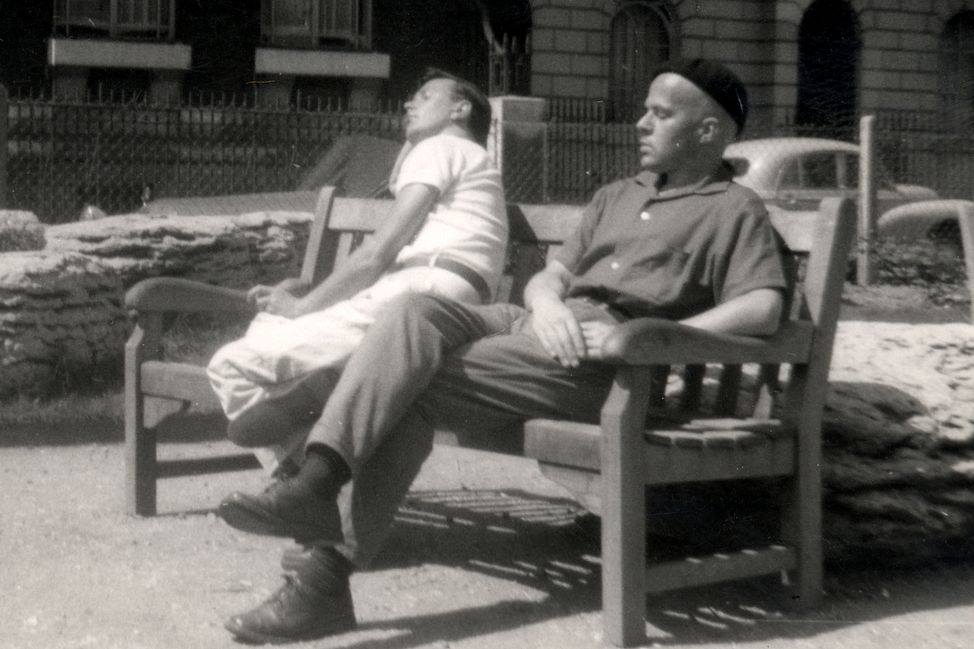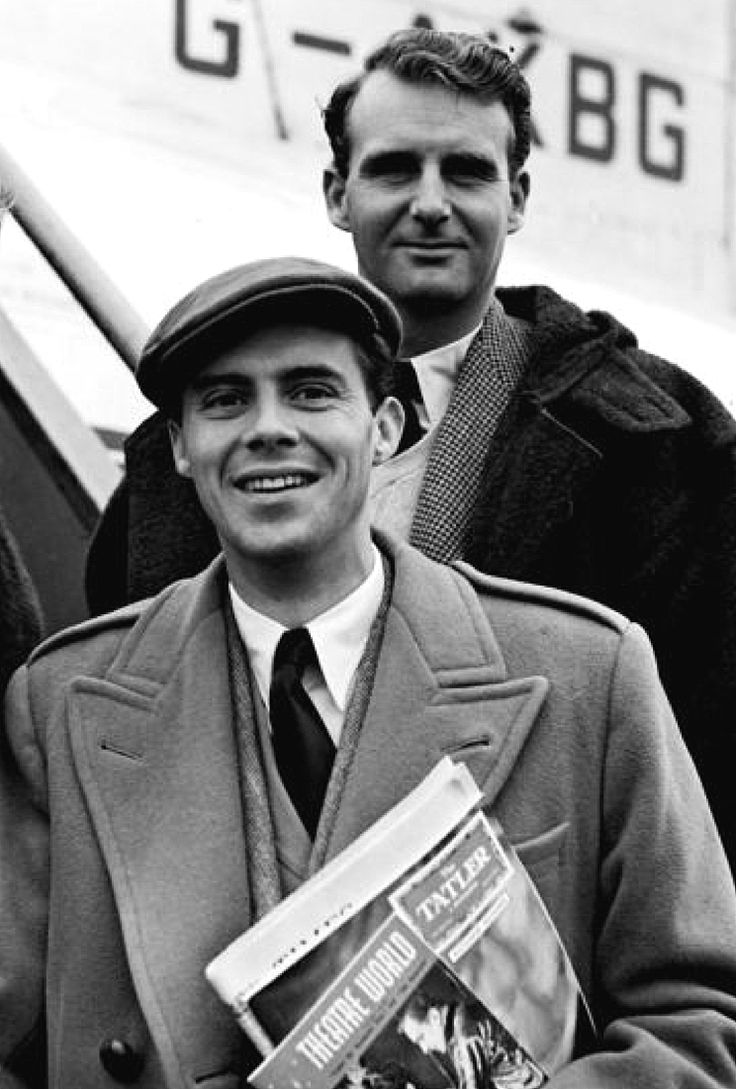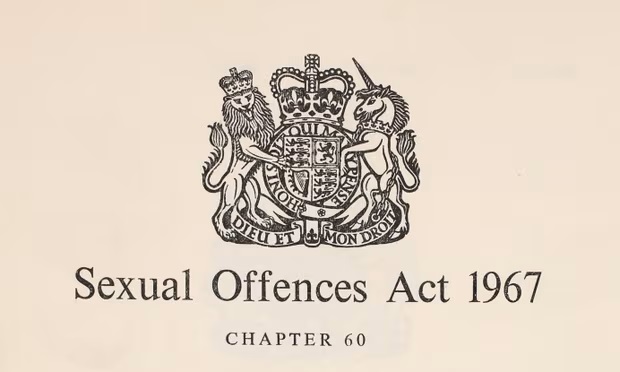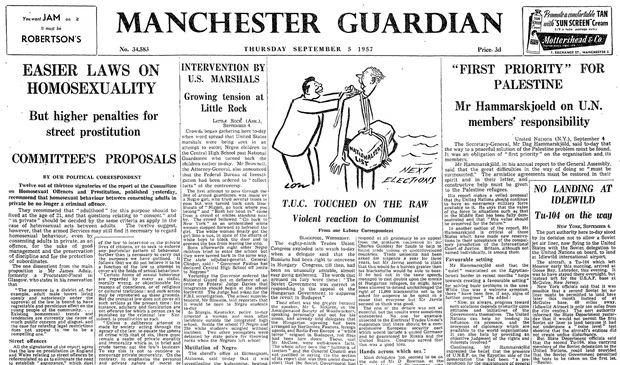There are many examples throughout the music world’s culture in the sixties and early seventies of people, famous, infamous and unknown who were gay,
who did not dare to come out publically, for fear that it would damage their career, reputation or both. Of course they had every right to make that decision but for every one of those who didn’t, there was likely someone else who suffered a little, as a result of it.
Equally, there were those who said to hell with convention, I’m going to live my life as I choose, both defying whilst defining convention around them. The artist Francis Bacon was at the very pinnacle of success in this era, living his life quite openly as a homosexual man. But sadly, as stories involving homosexuals all seem to in those days, it ended tragically as his lover died in a bathtub, whilst he went to the opening of his key show.

Joe Orton and Keith Halliwell were yet another couple whom tragedy struck down. In August 1967 Halliwell (41) murdered his lover Orton (then 34) with a hammer, in their flat in Islington and then took an overdose of barbiturates; homosexual acts (in private) had been legal for 2 weeks when they both died. Orton had become famous for his writing, especially the plays ‘Entertaining Mr Sloane’, ‘Loot’ and ‘What the Butler Saw’. Both men are now feted, especially Orton who has recently been called a’ subversive genius’ in an article by Lian Barnes for the BBC.
Halliwell, in contrast, had become jealous of his lovers success along with his regular encounters with young lads in cottages. However, for Bernard Greaves, a Cambridge architecture student in the mid-60s, Orton’s clear-eyed portrayal of aspects of contemporary gay life struck a chord. “The impact of his plays was enormous,” he said.
The subversive genius of Joe Orton BBC article from 2017
“I didn’t have a large circle of gay friends at that time; I was in the closet living a double life – nearly everybody was, because it was still illegal – but Orton put on stage the reality of what it was like for us in an unvarnished way.
The media, especially the popular press, gleefully reported such tragedies with the underlying morality tale contained therein. These were interesting characters, certainly yet not role models I really wanted to emulate and yet…their stories could have been told differently: Epstein, Bacon, Orton could have been portrayed sympathetically, with the paths their lives took, being seen as a result of the circumstances which society had placed them in. But no, the story was always one of sordidness, of scandal, the result of being misfits in society. This is what comes of deviance we were told. We didn’t really believe it but how could we show that our lives as lesbians and gay men could be positive, hopeful, lives worth leading?

There were a few exceptions in the sixties though of people who managed to be homosexual in their private life and yet allowed their careers to hint at something publically that suggested they were supportive of homosexuality too. One such actor in this period was Dirk Bogarde. Starting his career as very much a matinee idol appearing in such box offices successes as the ‘Doctor’ series (eg. Doctor in Love, 1954), he allowed it to dramatically change direction in 1961, by taking on the lead role in the film ‘Victim’, directed by Basil Dearden. Bogarde took the role of barrister Melville Farr, in a film which told a story about gay men being blackmailed under threat of exposure and jail time, a very real threat in that period. Remarkably it was the very first British production to use the word “homosexual”. John Coldstream noted in his 2004 biography of Bogarde:
“This was a way of getting out a message… he couldn’t go on a chat show and say, ‘Look, I’m living with Tony Forwood’”.
It played a role in helping the Sexual Offences Act, that decriminalised homosexual activity in private, finally be passed in 1967. Lord Arran, (who introduced the legislation in parliament) wrote to him in 1968 praising his “courage in undertaking this difficult and potentially damaging part”, adding “It is comforting to think that perhaps a million men are no longer living in fear”. Bogarde lived with his partner Tony Forwood, until his (Forwoods) death in 1988. Here, finally perhaps, is a role model that I could have attempted to emulate? However, crucially, in seven (yes seven!) best-selling volumes of his memoirs, he staunchly claimed to be ‘straight’. This was mainly put down to ‘morality’ clauses in his film contracts. Despite it being widely known in private circles and often rumored in public ones (it was more a less an ‘open secret’) even Bogarde it seems, who had acted several times as a homosexual man just couldn’t take the plunge and publically ‘come out’ as a gay man, right up until his death, in 1999.

https://www.bbc.com/culture/article/20210322-why-dirk-bogarde-was-a-truly-dangerous-film-star
What was needed was, somehow, that a large number of people ‘together’ made such an ‘event’ that the media couldn’t ignore it or report it in a completely and salaciously negative way. An event that others could see or hear of and recognise that other ordinary people, just like themselves, were lesbian or gay. For me, as a young teenager in 1970, luckily, such events were not too far off now.

ON to Sex, Love and life 1.9 The Seventies- with high shoes on, bolting through closing doors
Leave a Reply